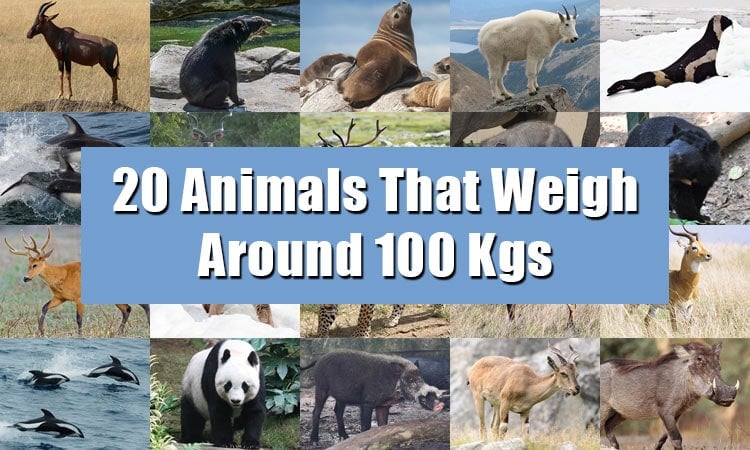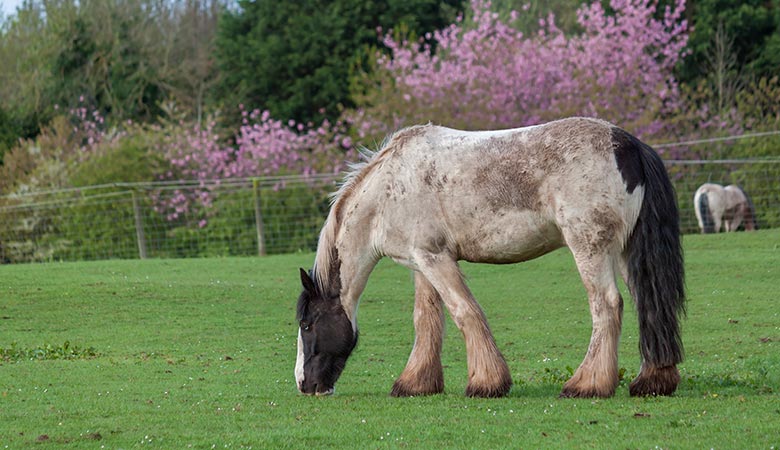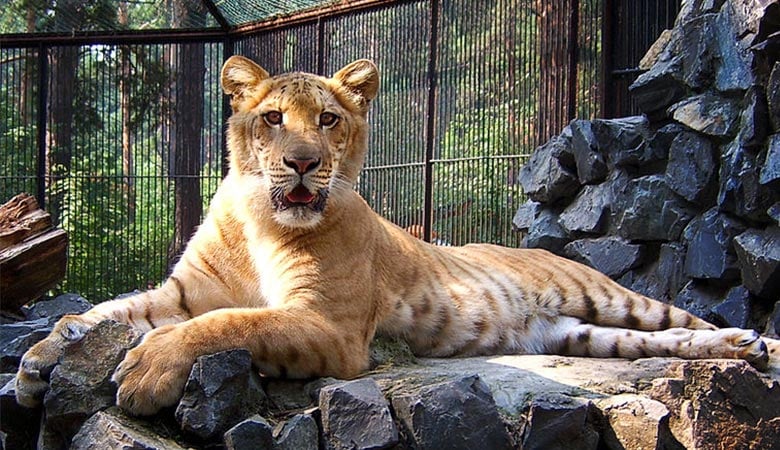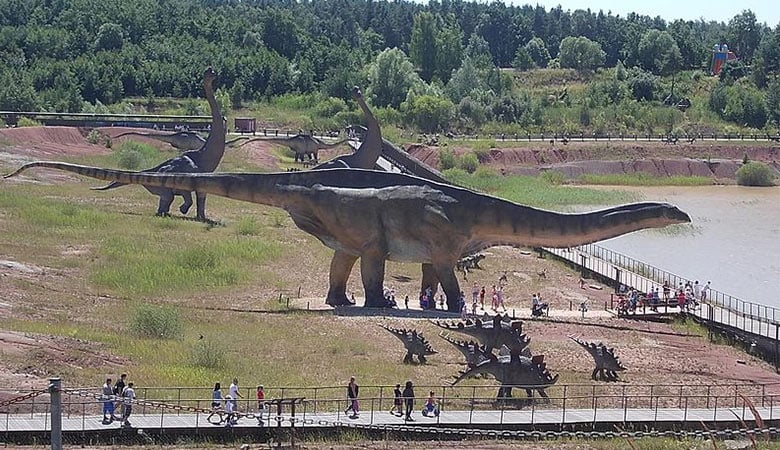There are over 7.77 million spies of animals globally, which bring a mixture of furry friends and giant mammals. As fascinating as it is to cohabitate with these creatures, some weigh as much as the buildings we live in.
In this article, take a closer look at animals that weigh 600 kgs.
1. The Kodiak Bear
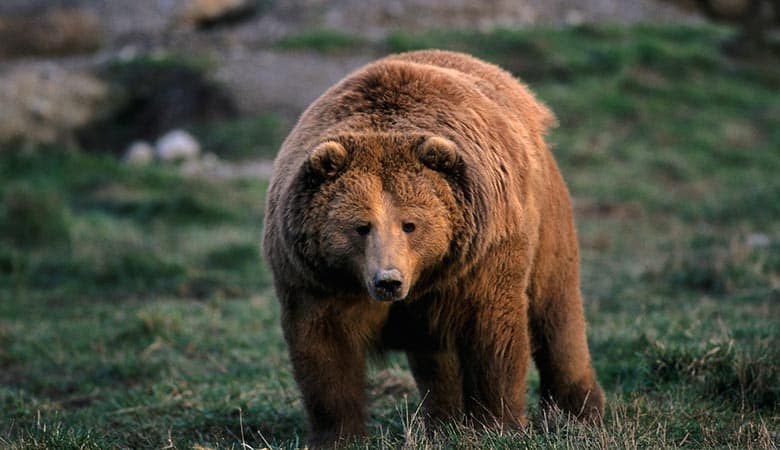
The Kodiak bear is a unique brown bear of the grizzly bear known by the scientific name Ursus arctos middendorffi. Their primary habitat is the island of Kodiak Archipelago. Research shows that they haven’t interacted with other bear species for over 12,000 years.
With about 3,500 Kodiak bears left in the world, it’s safe to say that they are productive and healthy, which means we will have them around for a long time. An adult bear weighs approximately 600 kgs and is said to be the largest bear in the world.
A large male stands as tall as ten inches high on its hind legs and is as high as five inches on all fours. Females are around 20% lighter than their male counterparts, weighing around 640 kgs.
2. Yak
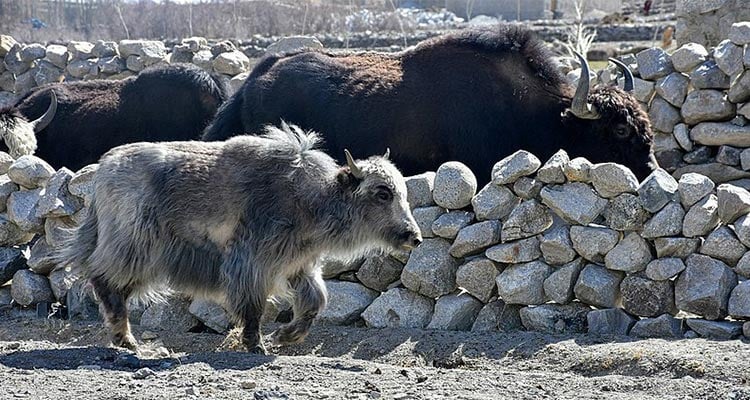
Cousins to the cows, these animals are best identified with their long hair and handlebar horns. They thrive in high altitudes of the Tibetan plateau, which is primarily grasslands. Compared to their cow cousins, these large mammals have three times the lung capacity to help take on the thin air, terrain, and harsh weather conditions they live under.
Due to poaching, interbedding, and habitat loss, these majestic animals are in danger of being extinct, with less than 10,000 animals roaming freely in the wild. Adult yaks are large and can stand as high as 2 meters tall at the shoulder, weighing about 600 kgs. Cows weigh less than half this much.
3. Giant Eland
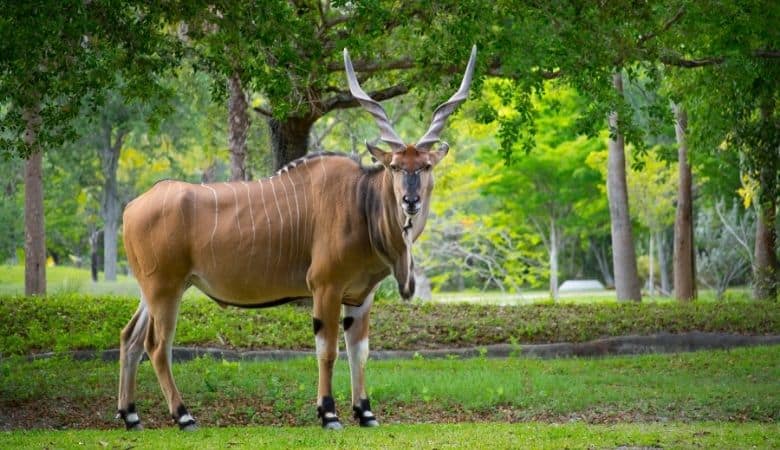
Giant elands are the largest antelope species in the world. They have a smooth, almost silk-like reddish brown chestnut coat decorated with 8-12 white stripes that ran vertically on their torso.
The males are a little darker than the females, and their fur tends to darken as they age. They have long slender legs with pretty white and black markings around the hooves.
These animals can sprint as fast as 70 kilometers per hour at top speed, which are standard for a saloon car. They weigh anywhere between 300 to 1,000 kilograms, with the average weight being 600kgs for an adult.
With this kind of weight, you expect to have a humongous animal which is the case here. Gian eland stands as high as 180 cm by 290 cm long.
4. Alaskan Moose
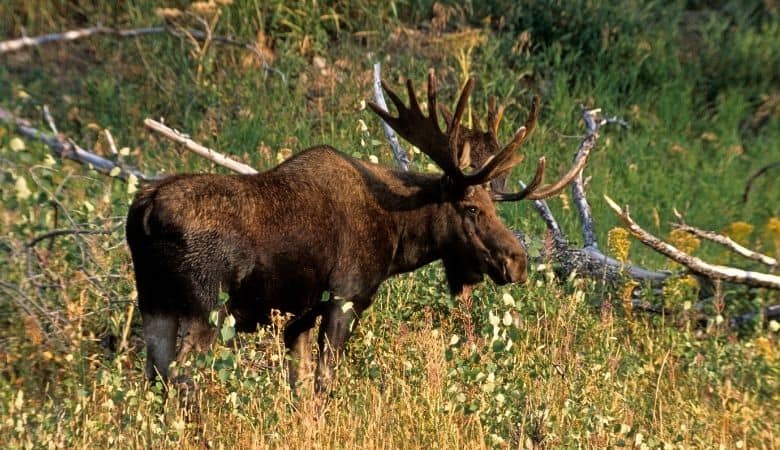
The deer family also boasts of a large mammal, the Alaskan moose. Also known as the Alces Alces, these deer have heavy bodies, long legs, and drooping noses. They are also the largest moose in the world.
Primarily, they are herbals and will munch on around 73 pounds of food a day during summer. Winters a little slow on the food as they only consume around 34 pounds of greens.
With that much food intake, you can expect them to be big-bodied, with the largest make standing at around seven feet at the shoulder. This is slightly shorter than the Yak but big nonetheless. Regarding weight, the Alaskan moose can weigh anywhere between 800 pounds for a small female (362kgs) and 1600 pounds (725kgs) for an adult male.
5. Giraffes
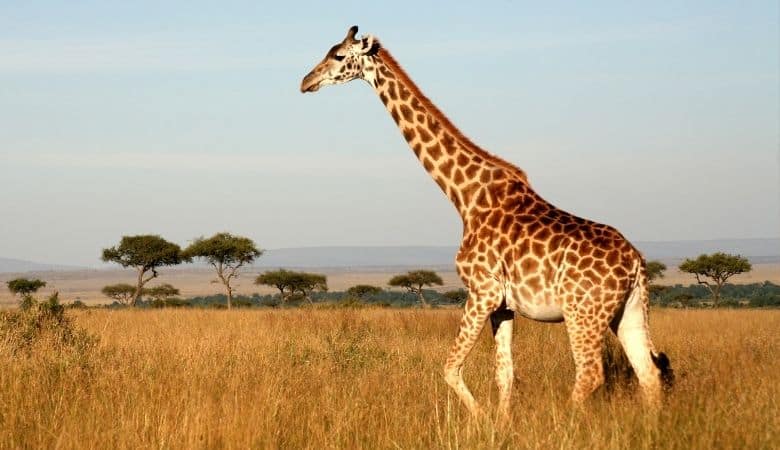
Towering necks and long legs are what make a giraffe one of the tallest and most famous mammals in the world. Its legs alone are taller than most humans, standing at around 6 feet or 1.8 meters long.
Research shows that their necks weigh around 600 pounds while their 2 feet hearts weigh approximately 25 pounds. Its lungs can take about 12 gallons (55 liters) of air. That’s a lot!
On a single day, giraffes eat around 75 pounds of food, so they spend most of their days eating. Because they love Luscious plants, they only need to drink water every several days. They stand at 14 to 19 feet tall and weigh around 739 kgs to 1270kgs.
6. Water Buffalo
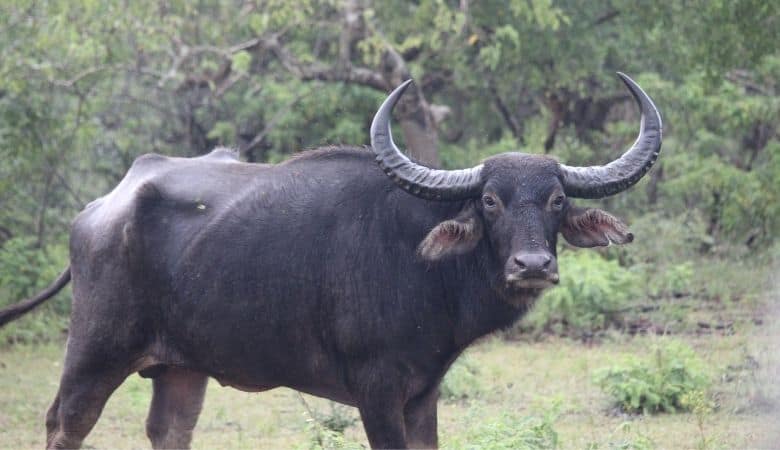
The water buffalo is the largest member of the Bovini tribe, including the yak, cows, bison, African buffalo, and other wild cattle species.
At its tallest, this animal stands at 5 to 6.2 feet which is taller than most adults. Male adult water buffalos weigh between 1,500 to 2,500 pounds which is equal to 680kgs to 1133kgs. Although females are smaller in height and weight, they are still taller and smaller than most adult males. On average, a female water buffalo weighs between 544kgs and 906kgs.
The females reproduce once a year with a gestation period of 9 to 11 months. Their young one’s weight between 18 to 22 kgs at birth.
7. False Killer Whales
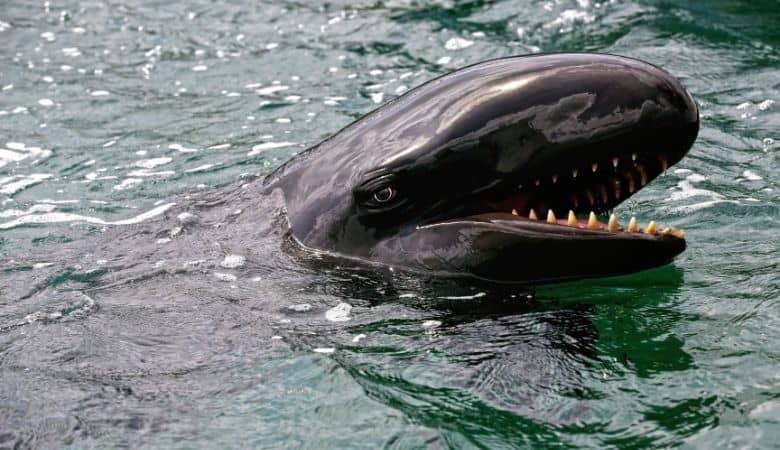
While their names suggest that they are dangerous, aggressive animals, the false killer whales are social. Typically, they live in tropical and subtropical oceans, especially in deep offshore waters.
To them, friends and family are everything, so you will find them swimming energetically in groups of 10 to 40 dolphins. They jump out of the water, performing, mucking, and flipping together.
On average, an adult false killer whale weighs 743 kgs to around 2,200 kgs and is approximately 6 meters long. A female weighs a maximum of 1,200 kgs and is about 4.5 meters long.
8. Gaur
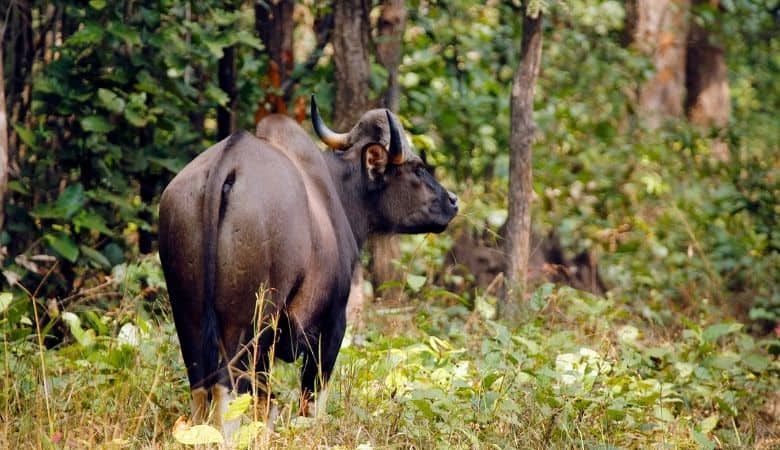
The gaur is another relative of the cow, like its counterparts on this list, one of the largest cow species. In fact, it’s the largest wild cow on the planet, bigger than the bison, water buffalo, and cape buffalo.
Mostly found in South Asia, they are listed as vulnerable animals and a threatened species due to their gravely declined population.
Their body length is anywhere between 8 and 12 feet long, and they stand as tall as 7.2 feet at the shoulder. Males are typically taller than females and weigh around 825kgs on average. However, this number ranges from 440kgs to 1,000 kgs for females and 588 to1,500 for males.
Final Words
Animals are a vital component of the ecosystem. They help maintain the cycle of energy in the environment and ensure the sustainability of the habitat we live in. While most of these large animals are now in danger of extinction, we need to do much more to protect them, and in turn, protect ourselves and the earth.

